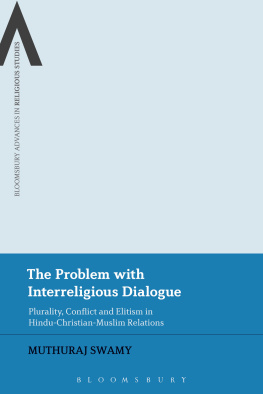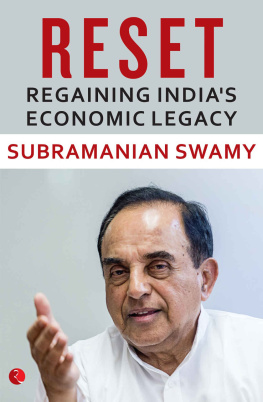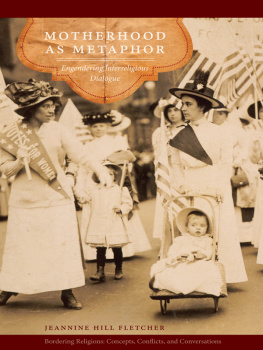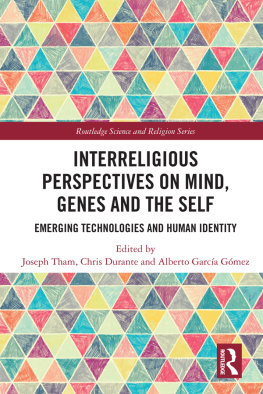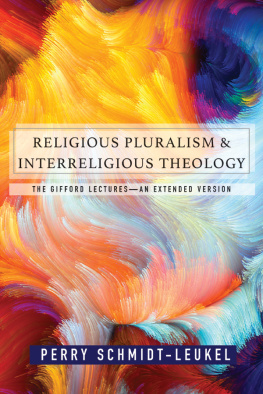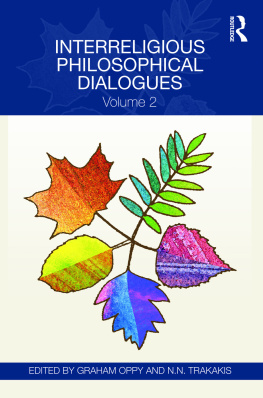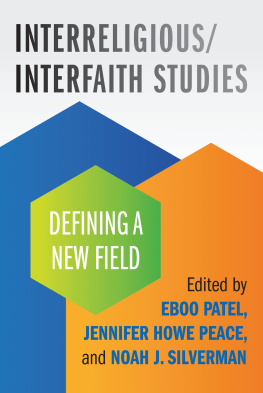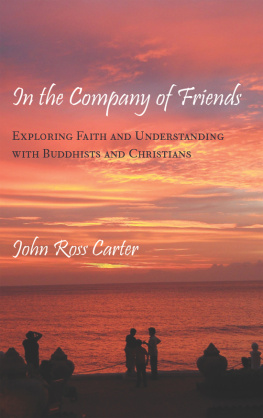Swamy - The Problem with Interreligious Dialogue
Here you can read online Swamy - The Problem with Interreligious Dialogue full text of the book (entire story) in english for free. Download pdf and epub, get meaning, cover and reviews about this ebook. publisher: Bloomsbury UK, genre: Religion. Description of the work, (preface) as well as reviews are available. Best literature library LitArk.com created for fans of good reading and offers a wide selection of genres:
Romance novel
Science fiction
Adventure
Detective
Science
History
Home and family
Prose
Art
Politics
Computer
Non-fiction
Religion
Business
Children
Humor
Choose a favorite category and find really read worthwhile books. Enjoy immersion in the world of imagination, feel the emotions of the characters or learn something new for yourself, make an fascinating discovery.
The Problem with Interreligious Dialogue: summary, description and annotation
We offer to read an annotation, description, summary or preface (depends on what the author of the book "The Problem with Interreligious Dialogue" wrote himself). If you haven't found the necessary information about the book — write in the comments, we will try to find it.
Swamy: author's other books
Who wrote The Problem with Interreligious Dialogue? Find out the surname, the name of the author of the book and a list of all author's works by series.
The Problem with Interreligious Dialogue — read online for free the complete book (whole text) full work
Below is the text of the book, divided by pages. System saving the place of the last page read, allows you to conveniently read the book "The Problem with Interreligious Dialogue" online for free, without having to search again every time where you left off. Put a bookmark, and you can go to the page where you finished reading at any time.
Font size:
Interval:
Bookmark:

The Problem with Interreligious Dialogue
Bloomsbury Advances in Religious Studies
James Cox and Steven Sutcliffe
This ground-breaking series presents innovative research in theory and method in the study of religion, paying special attention to disciplinary formation in Religious Studies. Volumes published under its auspices demonstrate new approaches to the way religious traditions are presented and analysed. Each study will demonstrate its theoretical insights by applying them to particular empirical case studies in order to foster integration of data and theory in the historical and cultural study of religion.
Appropriation of Native American Spirituality , Suzanne Owen
Becoming Buddhist , Glenys Eddy
Community and Worldview among Paraiyars of South India , Anderson H. M. Jeremiah
Conceptions of the Afterlife in Early Civilizations , Gregory Shushan
Contemporary Western Ethnography and the Definition of Religion, Martin D. Stringer
Cultural Blending in Korean Death Rites, Chang-Won Park
Globalization of Hesychasm and the Jesus Prayer , Christopher D. L. Johnson
Innateness of Myth, Ritske Rensma
Levinas, Messianism and Parody , Terence Holden
New Paradigm of Spirituality and Religion , Mary Catherine Burgess
Post-Materialist Religion , Mika T. Lassander
Redefining Shamanisms , David Gordon Wilson
Reform, Identity and Narratives of Belonging , Arkotong Longkumer
Religion and the Discourse on Modernity , Paul-Franois Tremlett
Religion as a Conversation Starter, Ina Merdjanova
Religion, Material Culture and Archaeology , Julian Droogan
Spirit Possession and Trance, Patrice Brodeur
Spiritual Tourism , Alex Norman
Theology and Religious Studies in Higher Education, edited by D. L. Bird and Simon G. Smith
Religion and the Inculturation of Human Rights in Ghana , Abamfo Ofori Atiemo
UFOs, Conspiracy Theories and the New Age: Millennial Conspiracism , David G. Robertson
The Problem with Interreligious Dialogue
Plurality, Conflict and Elitism in HinduChristianMuslim Relations
Muthuraj Swamy
Bloomsbury Academic
An imprint of Bloomsbury Publishing Plc

To
Amma & Appa
CONTENTS
Two interrelated questions are increasingly receiving serious attention in the contemporary context in the study of religion. The first is whether religion is a distinct entity different from others such as secularism, politics, economics and so on; the second is whether the world religions category where each religion is assumed to be a neatly developed, homogenized, complete system that is different from another similar system is an appropriate framework to understand, define and interpret how religion is understood and practised among common people. The heavily Western-, colonial- and Enlightenment-influenced notions of religion as a distinct unit and of world religions and their influences on contemporary societies are continually examined and critiqued by various studies undertaken by scholars of religion. This book attempts to join the discussion by critically looking at interreligious dialogue, an enterprise that uses the aforementioned categories uncritically. While carrying out its proclaimed objective of working for a peaceful, non-violent and harmonious society, where religion can contribute to the welfare of society, interreligious dialogue crystallizes these notions. In the process, dialogue neglects how ordinary people understand and integrate religion with other aspects of their life, and how they live with multiple identities among which religious identity is only one also not always based on world religions. Such realities among common people and common life-situations often go unnoticed or are intentionally ignored in elite theories of life. This book attempts to discuss some of them as a way of challenging interreligious dialogue as well as the world religions category.
This critique of interreligious dialogue is rooted in the fascination for dialogue that I held for several years, since the beginning of my theological education, and my subsequent realization of its limitations when I closely interacted with common people who are invited to dialogue. Of course, as a theological perspective on Christianitys relationship to other religions, dialogue has given rise to open attitudes among followers of religions challenging the fundamentalist and exclusivist perspectives prevalent among some sections of religions that claim others are false. But the serious problem with dialogue is that it is accelerating the problem it wants to solve: namely the conflicts and tensions among people, which, most often, dialogue associates, solutions included, with religion explicitly or implicitly.
It is true that interreligious dialogue has undergone various changes during the last few decades, in the light of changing contexts as well as in the process of responding to the challenges posed to it by its critics. In the process there are a number of suggestions and perspectives directed at dialogue to be more effective, more participatory, non-elitist and so forth. However, the basic assumptions in dialogue about the plurality of religions and religious conflicts as well as attitudes to ordinary forms of relating (and negotiating) in everyday living have seldom changed, or even been challenged, which makes dialogue only more problematic.
This book analyses these problems, keeping in the background the past seventy years of dialogue activities in India. The whole body of thinking and writing on dialogue as well as the practical dialogical activities are immense, both in India and outside of it. However, for my purpose in this book I am selective in using the materials available for discussion even while attempting to offer a birds-eye view on dialogue in India in the first part of the book. Insights received from fieldwork in rural South India are discussed to show how dialogue is oblivious to grassroots ways of relating and negotiating when dialogists still talk about dialogue at or for the grassroots. Towards the end, this book explores how multiple identities based on everyday ordinary living situations can be a challenger to interreligious dialogue based on the world religions category and fixed religious identities, without attempting to idealize and essentialize the former: the fundamental problem that is addressed is how dialogue just ignores or considers inferior and secondary the everyday relations among common people in their ordinary life situations.
The research for this book was originally undertaken as part of my PhD work which included a years fieldwork in rural South India and submitted to the University of Edinburgh in 2012. I have revised the material and updated it wherever possible.
Far from dying out in the face of the rapid socio-economic and educational changes of recent times, changes accompanied by explosive increases in migration between and especially within most countries, interest in and practise of a usually ritual-filled relationship to the less visible commonly called religion is not diminishing. A negative reason for this comes from the links currently made between religion and violence, attributed to the assumption that religion gives the strength that simple ethnic polarisation does not because it presents itself as a total world view with a total effect on people. There is truth in this. There is, indeed, often a gap between religion as a total singular entity in the view of those speaking for it and those followers silenced by such an exclusive view people for whom religion may rather present one variable element in contextualized, and commonly therefore multiple, identities. Further, and more generally, we must always be cautious in accepting that actions designated by actors as coming from their religion are indeed religiously motivated, and not the actions of ruthless gangsters such as those identifying with Islamic State, who validate evil while insisting on their so-called Islamic credentials. Religion has often been a muffling blanket thrown over problems by governments to cover violence which may derive as much or far more from relative economic marginalization or sheer poverty: the Hyderabad riots between Muslims and Hindus of the 1990s, disputed national identity in Myanmar between militant Buddhists and Muslim Rohingas, historical remnants of colonization affecting Christians in Northern Ireland or, the topic of this book, tensions between caste groups which erupted in fighting in the 1990s in southern Tamil Nadu.
Font size:
Interval:
Bookmark:
Similar books «The Problem with Interreligious Dialogue»
Look at similar books to The Problem with Interreligious Dialogue. We have selected literature similar in name and meaning in the hope of providing readers with more options to find new, interesting, not yet read works.
Discussion, reviews of the book The Problem with Interreligious Dialogue and just readers' own opinions. Leave your comments, write what you think about the work, its meaning or the main characters. Specify what exactly you liked and what you didn't like, and why you think so.

